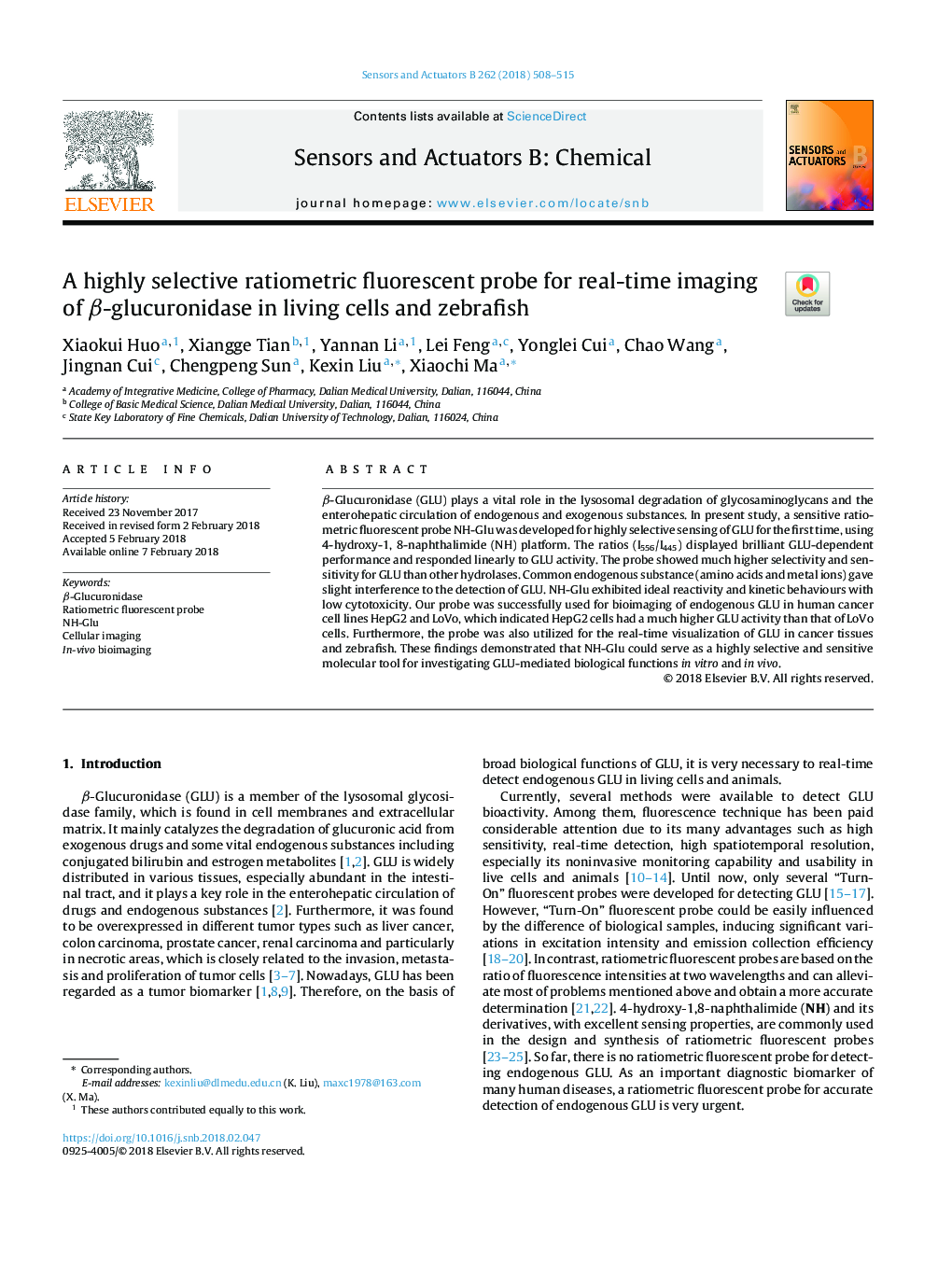| Article ID | Journal | Published Year | Pages | File Type |
|---|---|---|---|---|
| 7140644 | Sensors and Actuators B: Chemical | 2018 | 8 Pages |
Abstract
β-Glucuronidase (GLU) plays a vital role in the lysosomal degradation of glycosaminoglycans and the enterohepatic circulation of endogenous and exogenous substances. In present study, a sensitive ratiometric fluorescent probe NH-Glu was developed for highly selective sensing of GLU for the first time, using 4-hydroxy-1, 8-naphthalimide (NH) platform. The ratios (I556/I445) displayed brilliant GLU-dependent performance and responded linearly to GLU activity. The probe showed much higher selectivity and sensitivity for GLU than other hydrolases. Common endogenous substance (amino acids and metal ions) gave slight interference to the detection of GLU. NH-Glu exhibited ideal reactivity and kinetic behaviours with low cytotoxicity. Our probe was successfully used for bioimaging of endogenous GLU in human cancer cell lines HepG2 and LoVo, which indicated HepG2 cells had a much higher GLU activity than that of LoVo cells. Furthermore, the probe was also utilized for the real-time visualization of GLU in cancer tissues and zebrafish. These findings demonstrated that NH-Glu could serve as a highly selective and sensitive molecular tool for investigating GLU-mediated biological functions in vitro and in vivo.
Related Topics
Physical Sciences and Engineering
Chemistry
Analytical Chemistry
Authors
Xiaokui Huo, Xiangge Tian, Yannan Li, Lei Feng, Yonglei Cui, Chao Wang, Jingnan Cui, Chengpeng Sun, Kexin Liu, Xiaochi Ma,
